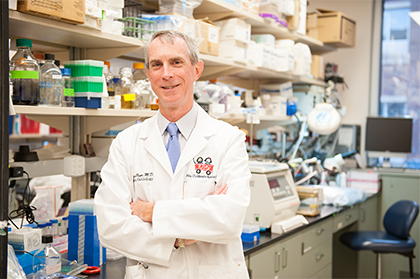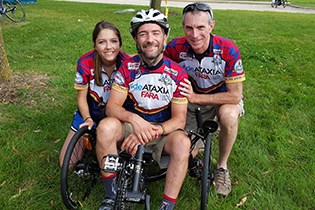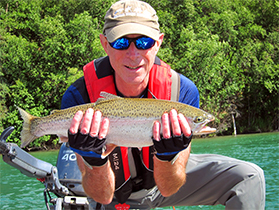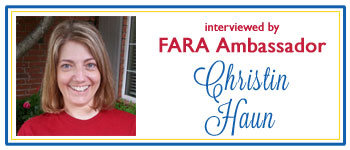 Name: R. Mark Payne
Name: R. Mark Payne
Title: MD Indiana University School of Medicine, Dept. of Pediatrics, Division of Pediatric Cardiology, Wells Center for Pediatric Research, Indianapolis, IN.
How long have you been working on FA and who was the first fellow FA researcher you met? I‘ve been working on FA since about 2001, when I was faculty at Wake Forest Univ. School of Medicine. Ron Bartek was the first person from FARA that I met when he came down to meet me at Wake Forest. He helped me get started in FA, introduced me to FARA and helped me win a FARA seed grant, and introduced me to Helene Puccio. Helene graciously shared her FA mice with me to let me test a drug for FA. As a result of this support, I changed the direction of my research to focus on FA and I have remained in the field ever since.
What got you interested in FA research? It was a result of my earlier training. During my postdoctoral work as part of my pediatric cardiology fellowship at Washington University in St Louis, I became interested in how proteins target and are imported into mitochondria. The lab that I trained in was directed by a pediatric cardiologist, and this influenced my research career. He had a focus on how mitochondrial dysfunction caused sudden infant death in young children. As a cardiologist I was interested in how defective mitochondrial function contributed to poor heart function in children with heart disease (cardiomyopathies).
What question or challenge were you setting out to address when you started this work? In 2000, I had set out to determine if a cell penetrant peptide, TAT, could carry a protein across the cell membrane into mitochondria and remain there. Mitochondria are, perhaps, the most inaccessible place in the cell and until that time, there was no easy way to carry a protein from outside of the cell into mitochondria in the intact animal. This was important because many diseases arise from mitochondrial dysfunction and we needed a way to repair these defects in children and adults. This approach took advantage of my prior training in mitochondrial protein import. We proved that we could move a full length protein into mitochondria from outside the cell and into tissues in the intact adult animal. The approach would even move proteins across the placenta into the fetus. This was exciting and opened the possibility of developing new therapies for mitochondrial diseases. At the time we were funded to work on a different mitochondrial disease, Trifunctional Protein Deficiency. However, the need for research in Friedreich's Ataxia was compelling and urgent (thank you Ron Bartek!), and the NIH allowed us to switch the project to FA. From this work we developed a protein replacement therapy for FA that has moved to clinical trials.
 What research topics or questions are you currently focused on? My lab and my focus is on heart failure in children and young adults. We are currently working on metabolism of the heart, and body, in FA and have recently begun to use a technology which allows us to identify small molecules in blood that reflect disordered metabolism. We hope to move this forward to understand how the metabolism of the FA patient is upset. Clinically, I am interested in the metabolism of the FA heart and how I can improve function of the FA heart in patients. I have also extended this metabolic approach to study children with congenital heart disease (single ventricle hearts) who develop severe heart failure.
What research topics or questions are you currently focused on? My lab and my focus is on heart failure in children and young adults. We are currently working on metabolism of the heart, and body, in FA and have recently begun to use a technology which allows us to identify small molecules in blood that reflect disordered metabolism. We hope to move this forward to understand how the metabolism of the FA patient is upset. Clinically, I am interested in the metabolism of the FA heart and how I can improve function of the FA heart in patients. I have also extended this metabolic approach to study children with congenital heart disease (single ventricle hearts) who develop severe heart failure.
What do you hope to achieve or what excites you in FA research? 1) I hope we can achieve a therapy for FA. We are currently in Phase I clinical trials for a drug from our lab to deliver a therapeutic frataxin protein to mitochondria for patients with FA. This is exciting and requires a team of people with expertise spanning basic science to clinical trials to FDA regulation. However, drug development is always risky and if this drug does not succeed, then I hope I can help other scientists and clinicians develop a cure for FA. The breadth of collaboration in FA research is truly unique in research. 2) I hope we can continue our basic and clinical research into the metabolism of FA. The goal here is to move our basic findings from the lab back to the patient. 3) I hope to continue treating patients with FA for their heart disease.
Have you met anyone living with FA? If so, please tell us about that interaction. Did it have an impact on your work? I see FA patients in my cardiology clinic. They are the motivation that drives my work and my commitment to FA research. The FA patients I have met, worked with, and taken care of are some of the most courageous, determined, and intelligent people I know. They constantly challenge me to think broadly, ask questions, and take risks to cure their disease.
 You serve voluntarily on FARA’s Scientific Advisory Board. Please tell us what you see as FARA’s key role in the research process: They play several important roles as follows: 1) They organize and help fund FA research. Because FA is a rare disease, it must compete against more common and better recognized diseases when applying for grants. FARA maintains a singular focus on FA for funding. 2) They organize scientific conferences on FA research. This is crucial to advancing the field as quickly as possible. 3) They help to introduce FA researchers to the field and lower barriers to collaboration.
You serve voluntarily on FARA’s Scientific Advisory Board. Please tell us what you see as FARA’s key role in the research process: They play several important roles as follows: 1) They organize and help fund FA research. Because FA is a rare disease, it must compete against more common and better recognized diseases when applying for grants. FARA maintains a singular focus on FA for funding. 2) They organize scientific conferences on FA research. This is crucial to advancing the field as quickly as possible. 3) They help to introduce FA researchers to the field and lower barriers to collaboration.
Tell us more about yourself: Grew up in Texas. Dad was a pediatrician, Mom was a homemaker. Have 2 brothers: younger is a pilot for a major airline, and the older is a lung doctor for Louisiana State Univ. School of Medicine. My wife, Helen, has always encouraged me to pursue FA research, even when it meant moving to do so. My daughters, Eliza and Becky, have kept me focused on the urgency of FA. My family’s support has been crucial. I’ve always loved the intersection of science and medicine: there can be no advance of one without the other. For me, FA research has been a road of discovery that I hope will continue to reveal new understanding of health and disease, and lead to new therapies. I am privileged and honored to work in the FA field.
Interviewed by:




